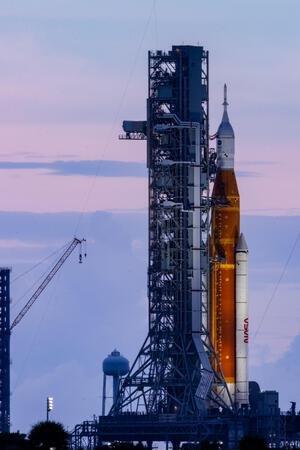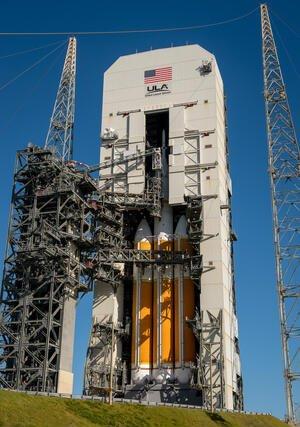TURBOCAM International
TURBOCAM Soars in Rocketry Machining as Industry Continues to Advance
Story by Callie Patteson
Long before TURBOCAM Inc. was developing parts to be rocketed off to space, CEO and founder Marian Noronha was looking to the stars. “I have something in common with Mr. [Elon] Musk, in that I was dreaming of Mars when I was 10 years old,” he said. Nearly 60 years later, that dream is closer to becoming a reality more than ever.

WHERE IT ALL BEGAN
While TURBOCAM first sought to enter the rocketry industry during the eighties, the company made its big break in 1997. At the time, a company reached out on behalf of Pratt and Whitney and requested that TURBOCAM make a set of shrouded rocket parts for the Space Shuttle Main Engines in just eight weeks – a near impossible task. “They were pretty tough parts to make,” Mr. Noronha said, detailing that they typically would take up to six months to produce. But TURBOCAM stepped up to the challenge, delivering the products in just seven weeks. This accomplishment put TURBOCAM “on the map as a turbo machinery provider to the rocketry and space industry,” according to business unit manager Mike Ambrogio.
Starting in 1999 and continuing for the next 20 years, TURBOCAM pioneered shrouded liquid hydrogen turbines for Delta IV rocket engines.
“We did that in the 90s into the 2000s, but it was always more on the non-privatized side of it,” he added.
Mr. Ambrogio revealed that it was the recent space race within the last decade or so among private entities that made TURBOCAM’s rocketry production “boom.”
While much of TURBOCAM’s exposure has been through word-of-mouth recommendations, the company has also gained support from state lawmakers. In 2015, Mr. Noronha presented former New Hampshire Senator Kelly Ayotte with a rocket turbopump impeller. Just moments later, the senator took the part into a subcommittee meeting on purchasing rockets from Russia versus the United States. Ultimately, the subcommittee voted to support American-made rockets.
CURRENT RELATIONSHIPS
TURBOCAM’s first production relationship with a major private company in the industry started in 2013, while a second major relationship formed in 2017.
With both companies, TURBOCAM produces liquid oxygen turbo pumps and fuel turbo pumps. These are made up of a number of turbomachinery components, including turbine rotors and stators, inducers, open and integrally shrouded impellers, and nozzles.
The turnaround time for many of these complex components – which vary in size – can take up to 18 to 20 weeks to produce, or even longer.
While this is drastically longer than the impressive seven-week timeline from the 1997, Mr. Ambrogio noted that client needs have also changed.
“We’re very nimble, we’re very agile,” he said. “When there are design changes, we incorporate them quickly [and] collaborate with the customer up front during the design process, providing manufacturability feedback in real-time.”
Mr. Noronha has touted this collaboration as “the best part” of the whole production process.”
When working directly with the customer, he has found that it can be hard to achieve exactly what is drawn or written down without further discussion. “Sometimes what they say and what they really need are two different things. It can be very hard to achieve and expensive,” he said. “And some of what is difficult to make may not be that critical.”
In recent years, TURBOCAM has also been working with smaller rocket launch services alongside their larger commitments.
In 2022 alone, TURBOCAM worked with four different customers to manufacture 61 unique designs, and produced a total of 884 rocketry parts.

SOARING TO THE FUTURE
Mr. Noronha looks back fondly on the progress TURBOCAM has made in the rocketry industry so far, as well as the pride employees have in making these complex products.
“I remember going for a walk with one of the machinists some years ago, and he told me, ‘I just look at it and I’m amazed I actually made something like this.’ There’s tremendous satisfaction.” Initially, many people at TURBOCAM did not consider rocketry to be a “volume business,” the founder said, however as the business has grown, more opportunities lie on the horizon. In the early 2000s, rocketry production netted approximately $1 million of annual business, however now that has soared to north of $10 million with the company expecting to double its revenue from 2022 to 2023, according to Mr. Ambrogio. We’re “definitely growing relationships and partnerships with those customers.” Mr. Ambrogio hopes to see TURBOCAM continue to be the preferred supplier for their current relationships, locking up long term agreements for further commitment. As this industry moves forward, TURBOCAM has also been experimenting using electrochemical machining (ECM). The process could help the company manufacture rocket parts “more accurately, faster and cheaper,” according to Mr. Ambrogio.
So far, TURBOCAM has one dedicated ECM machine for rocketry parts and should see the first deliverable part made with it in the coming months. Mr. Noronha hopes for TURBOCAM’s product volume to increase as the industry advances, particularly with the proliferation of communications satellites. Additionally, he aspires to see TURBOCAM become a rocket engine assembly company as well. “That would always be a direction we should aim for, to add more value into what we make,” he said, adding that it’s “more fun” and prevents the ingress by competitors.
